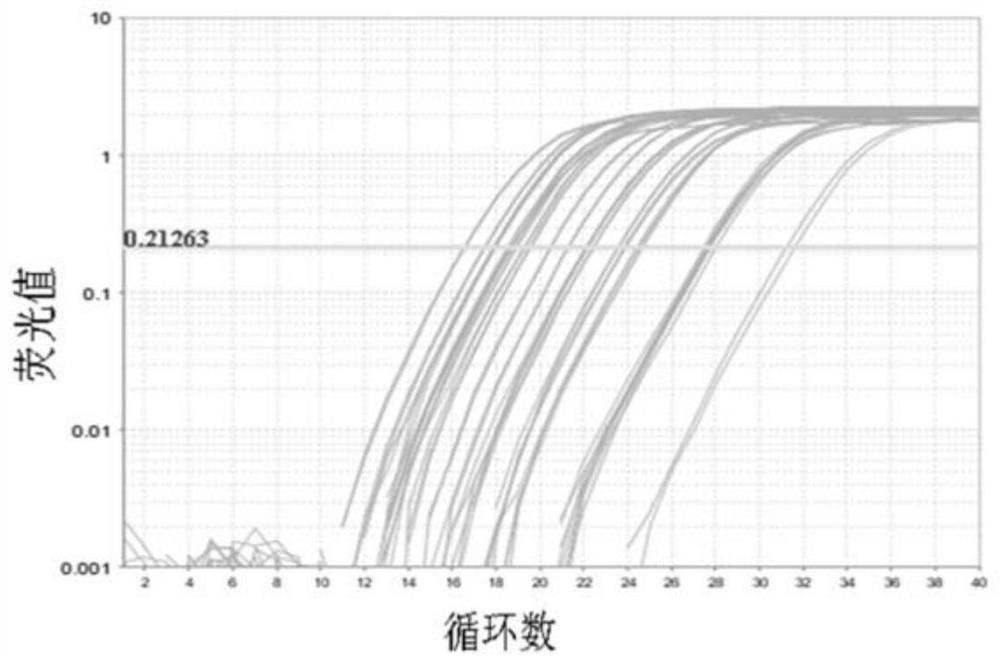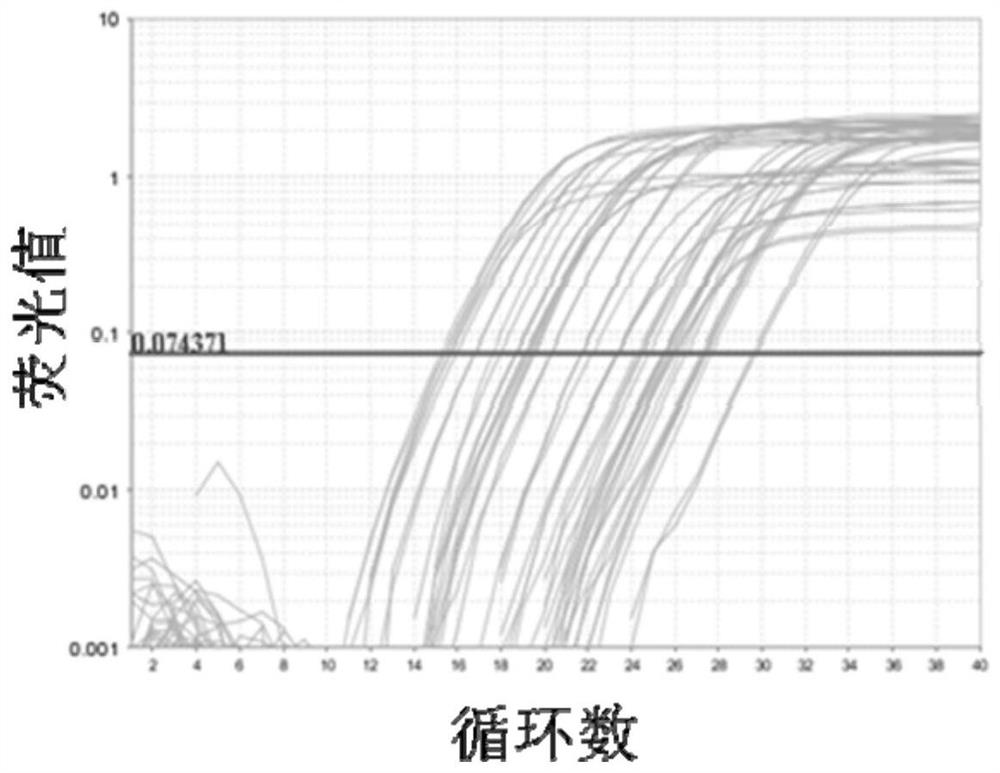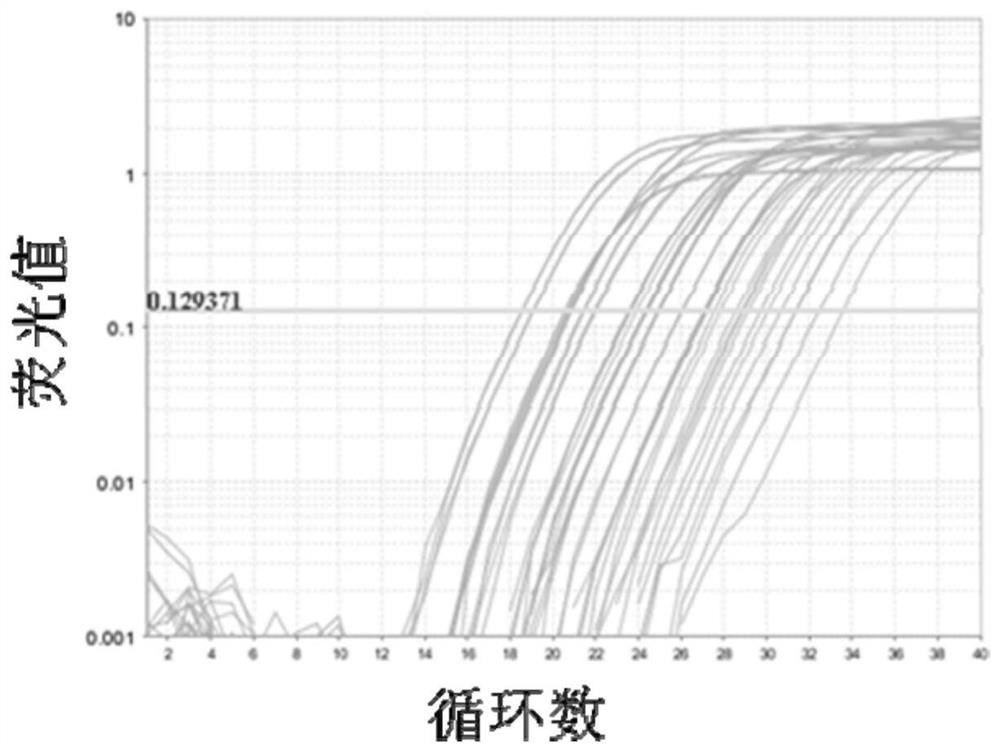Application of specific primers of clc gene in preparation of kit for detection of subtypes of chronic sinusitis with nasal polyps
A specific technology for chronic sinusitis, applied in the field of biomedicine, can solve the problems of different number of inflammatory cells, difficulty in batch operation, fear of patients, etc., to achieve the effect of high identification accuracy, saving labor costs, and solving human errors
- Summary
- Abstract
- Description
- Claims
- Application Information
AI Technical Summary
Problems solved by technology
Method used
Image
Examples
Embodiment 1
[0068] A kit for detecting subtypes of chronic sinusitis with nasal polyps, comprising the following reagents:
[0069] Reagents for extracting RNA from nasal polyp tissue: 20mL RNA extraction solution Trizol or RNAiso Blood or RNAiso Plus or others containing phenol, guanidine isothiocyanate, 8-hydroxyquinoline, guanidine isothiocyanate, β-mercaptoethanol, etc. Substances that can rapidly disrupt cells and inhibit nucleases released from cells; 2mL of chloroform; 20mL of isopropanol; 40mL of 65-90% ethanol; 5mL of RNase- and DNase-free water;
[0070] Reagents for reverse transcription of extracted RNA into cDNA: 40 μL of reverse transcription mixture (containing enzymes required for reverse transcription, RNase inhibitors, random 6-nucleotide primers, polythymine, T repeat oligonucleotides , deoxyribonucleotide triphosphate mixture, buffer, etc.), 160 μL of RNase- and DNase-free water; the RNase- and DNase-free water is used to make up the system, dissolve, and dilute RNA; ...
Embodiment 2
[0073] A kit for detecting subtypes of chronic sinusitis with nasal polyps, comprising the following reagents:
[0074] Reagents for extracting RNA from nasal polyp tissue: 1mL RNA extraction solution Trizol or RNAiso Blood or RNAisoPlus or other substances containing phenol, guanidine isothiocyanate, 8-hydroxyquinoline, guanidine isothiocyanate, β-mercaptoethanol, etc. Substances that can rapidly disrupt cells and inhibit nucleases released from cells; 0.2mL of chloroform; 0.2mL of isopropanol; 0.2mL of 65-90% ethanol; 0.05mL of RNase- and DNase-free water;
[0075] Reagents for reverse transcription of extracted RNA into cDNA: 2 μL of reverse transcription mixture (containing enzymes required for reverse transcription, RNase inhibitors, random 6-nucleotide primers, polythymine, T repeat oligonucleotides , deoxyribonucleotide triphosphate mixture, buffer, etc.), 7 μL of RNase- and DNase-free water; the RNase- and DNase-free water is used to make up the system, dissolve, and d...
Embodiment 3
[0078] A kit for detecting subtypes of chronic sinusitis with nasal polyps, comprising the following reagents:
[0079] Reagents for extracting RNA from nasal polyp tissue: 0.1mL RNA extraction solution Trizol or RNAiso Blood or RNAiso Plus or other containing phenol, guanidine isothiocyanate, 8-hydroxyquinoline, guanidine isothiocyanate, β-mercaptoethanol 0.05mL of chloroform; 0.015mL of isopropanol; 0.0075mL of 65-90% ethanol; 0.01mL of RNase- and DNase-free water ;
[0080] Reagents for reverse transcription of total RNA into cDNA: 1 μL of reverse transcription mixture (containing enzymes required for reverse transcription, RNase inhibitors, random 6-nucleotide primers, polythymine, T repeat oligonucleotides, Deoxyribonucleotide triphosphate mixture, buffer, etc.), 0-10 μL of RNase- and DNase-free water; the RNase- and DNase-free water is used to make up the system, dissolve, and dilute RNA;
[0081] Reagents for real-time fluorescent quantitative PCR reaction of CLC gene...
PUM
 Login to View More
Login to View More Abstract
Description
Claims
Application Information
 Login to View More
Login to View More - R&D
- Intellectual Property
- Life Sciences
- Materials
- Tech Scout
- Unparalleled Data Quality
- Higher Quality Content
- 60% Fewer Hallucinations
Browse by: Latest US Patents, China's latest patents, Technical Efficacy Thesaurus, Application Domain, Technology Topic, Popular Technical Reports.
© 2025 PatSnap. All rights reserved.Legal|Privacy policy|Modern Slavery Act Transparency Statement|Sitemap|About US| Contact US: help@patsnap.com



